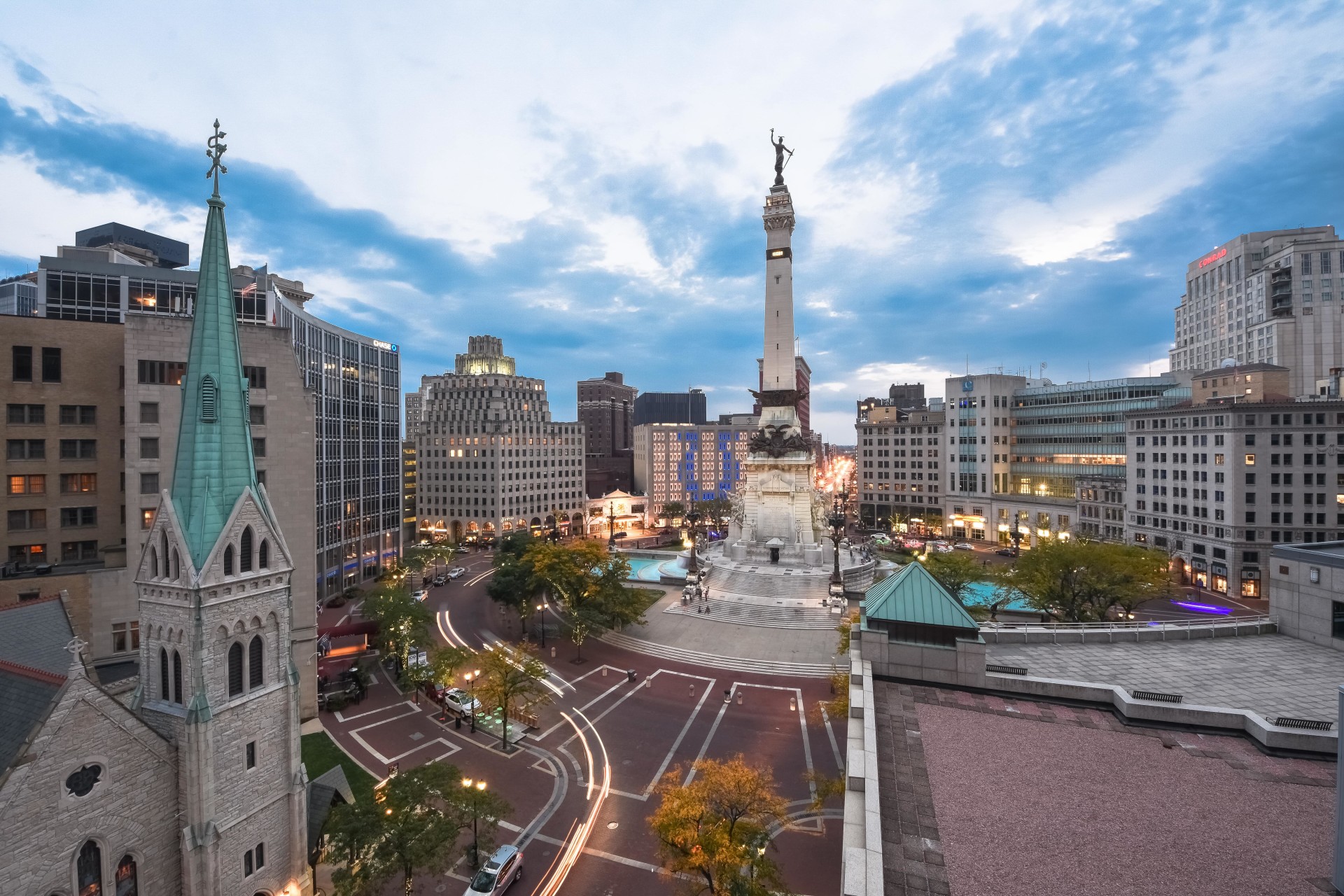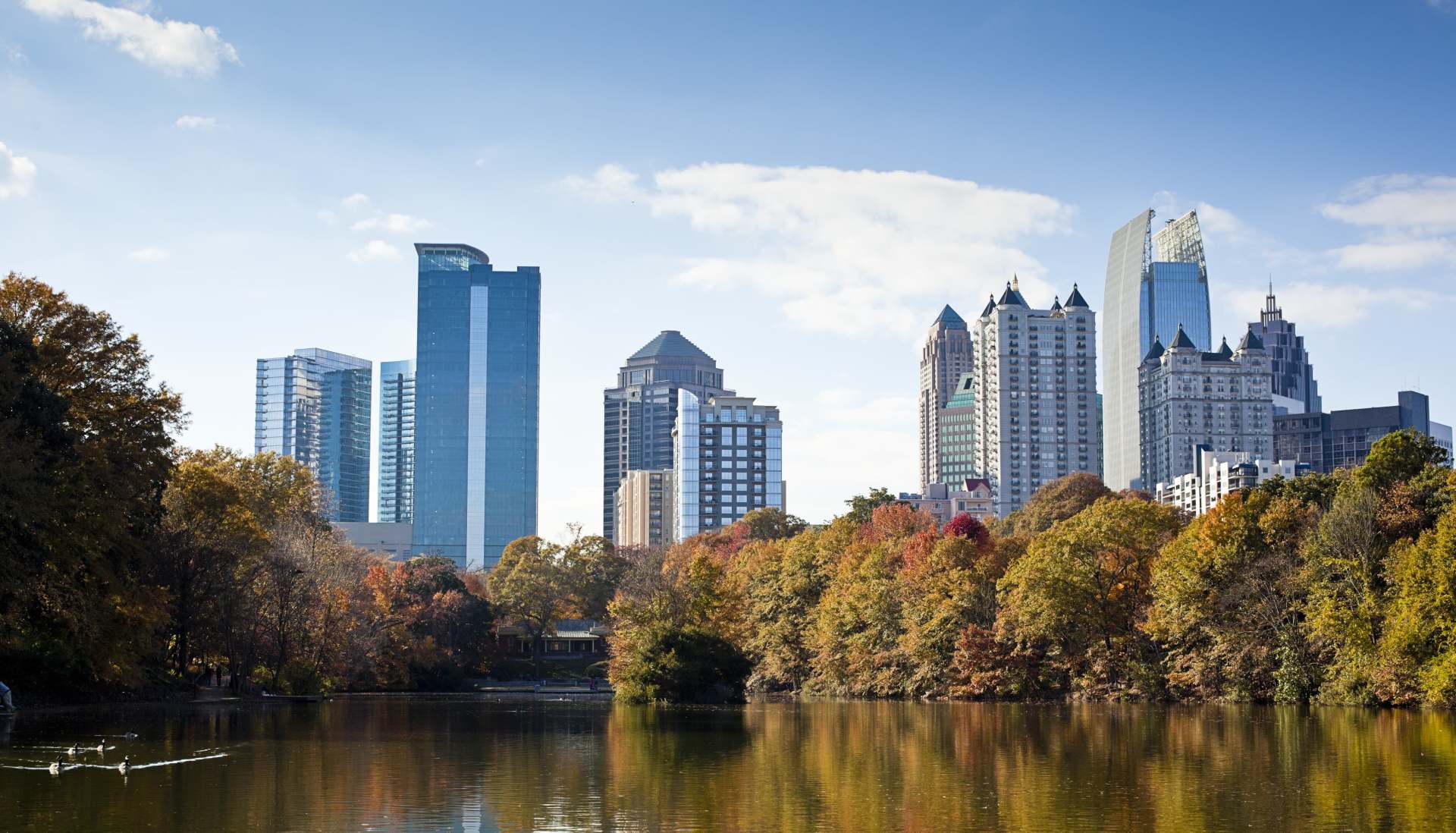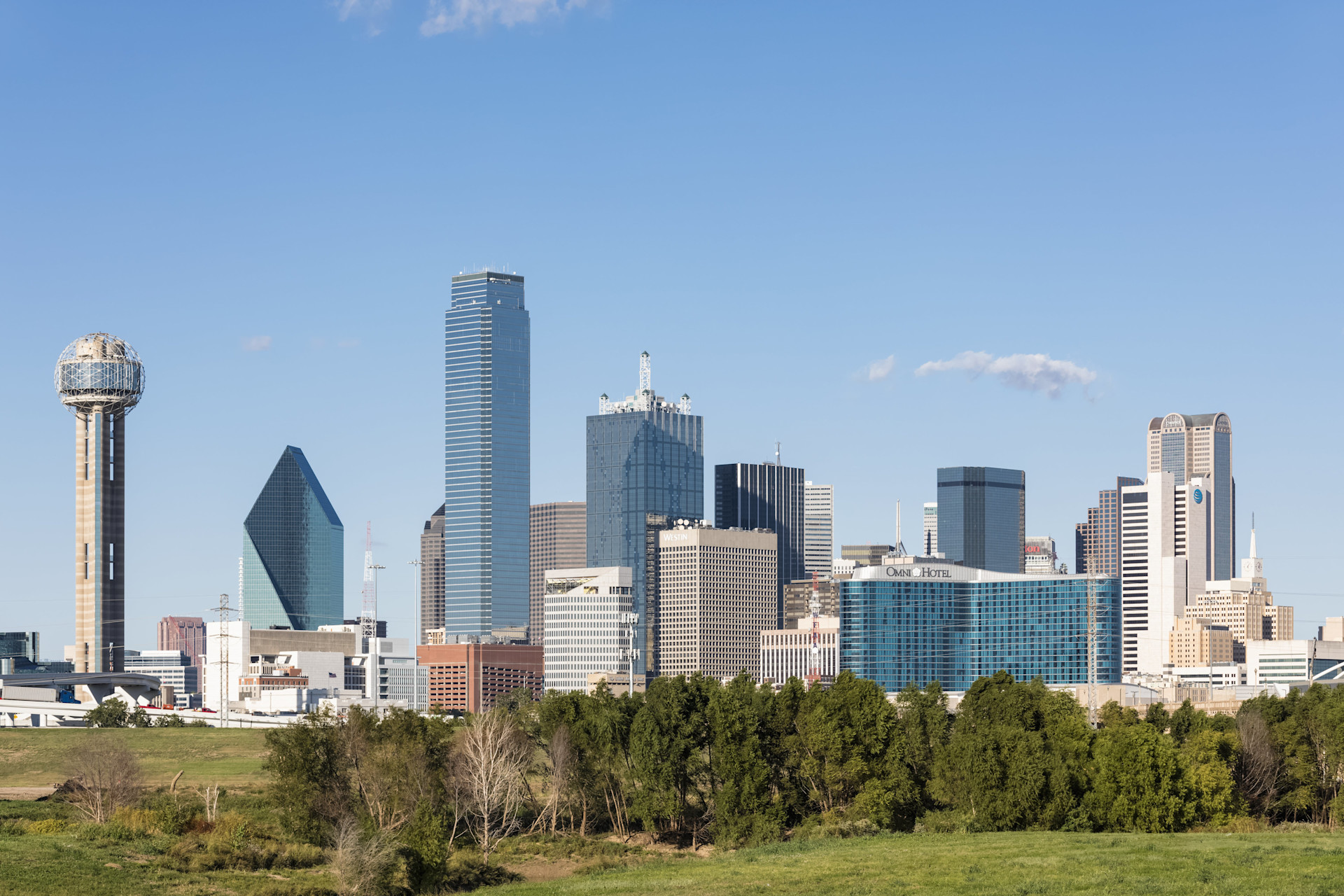One could argue that Jacksonville’s less-than-stellar reputation in pop culture — think cultural backwater populated by hillbillies, a city that couldn’t supply enough hotel rooms at the 2005 Super Bowl — has worked in its favor, with residents enjoying a pleasant and affordable quality of life in a river-and-ocean city well below the radar.
But Jacksonville’s affordable real estate has been discovered, and the city’s sales and rental markets are showing some resilience while other hot markets across the country slow amid steeper borrowing costs and the highest inflation in 40 years.
Locals in the know would argue that there is still some runway before prices begin to match those of other in-demand cities, and Jacksonville remains a very good place to invest, provided a buyer is ready to wade into its hyper-competitive market.
The popular TV comedy series “The Good Place,” which ran from 2016-2020, was a relentless basher of Jacksonville. One of the show’s main characters, Jason, played by Manny Jacinto, was from the city, and his many misadventures provided ample fodder to fan the city’s reputation as profoundly backwards — in the classic hillbilly tradition.
According to the Tampa Bay Times, which memorialized the end of the series with an entire story about its jokes about the city, the comedy was rife with “one-liners hilariously thrown in to paint Jacksonville as a lawless swamp-city dominated by aspiring DJs and gator wranglers.”
The lackluster record of the Jacksonville Jaguars (Jason’s favorite team) was, predictably, a part of the running joke, to the point that when the Jags had an uncharacteristically good year in 2018, Jacinto became a kind of local hero.
An underestimated city hits its stride
All kidding aside, the city, and its real estate market, has long been underestimated, and the secret that there are deals to be had here is an open one.
“Jacksonville has been undervalued for a very long time compared to the national numbers,” said Wendy Griffis, a Better Homes & Gardens realtor. “At one point you could buy a beautiful house on the ocean for a million—now that couldn’t happen.”
According to data from Better Homes & Gardens Real Estate Lifestyles Realty, the dollar volume of closed sales in Northeast Florida went from $9 billion in January of 2021 to over $14 billion in January of 2022.
- In June, Jacksonville’s median home listing price was $321,000, up from $255,000, or nearly 26 percent, year over year, (All numbers from realtor.com.)
- The median sale price was $320,000, upfrom $260,000 in June of 2021, or about 23 percent.
- Homes were on the market for a median 44 days in June, down from 47 days year-over-year.
- Median single family rents rose to $1,709 as of March, up 13.9 percent year-over-year, according to John Burns Real Estate Consulting.
Lisa Pruitt has worked in real estate in the area since 1992, and has witnessed a shift.
“It’s a great place for investors to come in,” she said. “It’s only to the locals that prices seem extremely high because of what we’re used to.”
At the same time, Griffis says the overheated Jacksonville real estate market requires a constantly evolving strategy, with many offers over asking.
Buyers from far-flung places discover Jacksonville
Griffis says that “100 people a week are moving to Jacksonville,” and reports make varying claims that some 600-1,000 people are moving to Florida every day.
But the demographics of new buyers has morphed considerably over the last few years, as they have in other Florida cities, such as Tampa and Orlando, and other hot markets across the South, like Atlanta, Charlotte, Raleigh and Dallas.
Pushpa Devi, a Jacksonville realtor for almost two decades, has seen the change.
“It started out that people from Miami were trying to get out of that craziness, looking here for properties,” she said. “Now it’s becoming all Northeast and West Coast people, selling their house for a million, and getting a house double the size for a million here.”
In fact, U.S. News & World Report ranked Jacksonville #22 in its 25 Best Places to Live in the U.S. 2021-22.
The mild weather doesn’t hurt. Pruitt points out that North Florida is more like southern Georgia than like southern Florida as far as climate, with a few seasonal changes, generally nothing below 50 degrees in the winter, and temperatures usually a bit cooler than the rest of the state in the summer.
Investors should be aware of the city’s flood risk, which the website Risk Factor (created by the nonprofit First Street Foundation) rates as moderate but increasing because of climate change. As an ABC TV affiliate reported, 29,000 properties had a 1 percent chance of being reached by floodwaters in 2020. By 2050, that number will rise to more than 47,000.
Since many areas are facing increased risks from rising, investors should weigh the pros and cons of investing in a flood zone and vet properties they are interested in; Risk Factor has a tool that can search homes by address to assess their flood risk.
Geography, with watery borders, is destiny
Jacksonville’s geography is defined by the Atlantic and the beach communities to the East; by the St. Johns River, which runs north-south through the city; and by the fact that it’s the sixth-largest city by area in the U.S., clocking in at a whopping 875 square miles.
Gary Sass is a member of the city’s Historical Society and owner of AdLib Tours.
“The good thing about Jacksonville is, it’s very spread out and each community has something different to offer,” he said.
The population of the metro area was 1.314 million in 2022, up 1.31 percent from 2021, which followed increases of 1.33 percent in 2020 and 1.35 percent in 2019.
“The bad part is that it’s very spread out, so if you’re trying to name it one thing, it’s very hard to describe,” he added. Despite its sprawl, locals are quick to mention that traffic isn’t much of a problem — yet, and I-95 makes the city easy to navigate.
Devi notes that the city’s unique geography is a huge selling point.
“You have a city with a river going through it, plus an ocean,” she said. “It’s an interesting way to live — you can get property on the river and take a boat and go right out to the ocean. There aren’t a lot of cities in this type of weather that have all of that available.”
Florida’s best school district is St. Johns (spanning a good chunk from the beaches inland to the river), making it one of the most sought-after places in the city for families with school-age children.
Not surprisingly, according to Pruitt, “St. Johns county’s price point is through the roof right now.”
Riverside Avondale has been listed by the American Planners Association as one of America’s Top 10 neighborhoods, and Jacksonville boasts a fair number of these gems in its geographically sprawling metro area.
An intriguing history for a 200-year-old city
St. Augustine, the oldest city in the U.S., with a founding in 1565, is just south of Jacksonville, and Sass explains that the city shares some colonial history with that area, but none of it has survived.
The founding of Jacksonville, which began as a Spanish territory, is recorded as 1822, so June marked its bicentennial.
According to Sass, the city saw quite a few booms and busts, including a spike in population after the Civil War as soldiers who discovered the great weather migrated there, and the wealthy flocked to large hotels in the winter.
Concurrently, it became Florida’s banking and commerce center, until a fire in 1901 “destroyed the city in 8 hours,” notes Sass. By 1903 it had been rebuilt as one of the world’s most modern cities, and more commerce — including a thriving early film business (pre-dating Hollywood) and, in the 1920s, many insurance companies — set up shop there.
Today, the Navy is a major Jacksonville employer, a trend that started gaining traction during WWII, when Naval Station Mayport and Naval Air Station Jacksonville, both massive military installations, were established. Naval Submarine Base Kings Bay is the third large base in Jacksonville.
Today, the area has about 75,000 active duty, reserve and civilian personnel, accounting for 14 percent of the area's workforce. The lack of a state income tax, and a strong support system, makes Jacksonville an attractive permanent home for military retirees.
There are almost 1.5 million military retirees living in Florida, just behind California (1.6 million) and Texas (1.56 million), which rank 1 and 2 in the country for that cohort. (According to the Veterans Administration.)
Other top employers include Amazon, the Mayo Clinic, Johnson & Johnson, and a host of fintech companies. Dun & Bradstreet, FIS, and Nymbus recently decided to locate their headquarters there. And insurance and financial services companies still dominate, giving credence to an old nickname for the city— the Hartford of the South.
A legacy of music and a passion for art, and food
During the 1920s, the city also became known for La Villa, aka the “Harlem of the South,” thanks to its many live music venues and nightlife scene.
Ray Charles, briefly a Jacksonville resident before he became a star, played at a renowned theater there called The Ritz. Also a Jacksonville resident for significant periods of her life was writer Zora Neale Hurston, who once lived in the city’s Eastside.
Boosters point to a vibrant cultural scene, and many major, esteemed institutions, from the Cummer Museum of Art & Gardens to the top-ranked Jacksonville Symphony Orchestra, back that up. The city also really loves its ArtWalks (there are 3, in different neighborhoods) and art districts, including Riverside Arts Market and the Cork Arts District.
Visitors may notice a lot of public art — especially murals — throughout the city; Sass points to a city ordinance that mandates public art whenever there’s new construction.
Like any good, self-respecting, up-and-coming destination, Jacksonville’s culinary and brewery scene is also on the rise.
From two James Beard–nominated chefs (Brian Whittington at Orsay and Tom Gray at Town Hall and Prati Italia) to the Jax Ale Trail (the city boasts dozens of local breweries) to Southern comfort food to fish camps, the city has a thriving mix of old-school and elegant, driven by locally sourced ingredients that take advantage of the area’s abundance.
How to win in Jacksonville real estate
Advice for prospective investors in Jacksonville real estate is literally all over the map, which makes sense considering the city’s sheer acreage and quantity of neighborhoods and districts. But be ready to move if there is a deal to be had.
Consider master-planned communities
Peter Ma, an Executive VP at England-Thims & Miller, Inc. who oversees land development projects in Northeast Florida, points to established and up-and-coming master-planned communities as good bets.
He mentions Nocatee, in coveted St. Johns County; Julington Creek, established in 1994; and the new developments of 7 Pines and eTown as planned communities that will appreciate in value.
Be open to different areas
Pruitt advises looking at the Northside area, the West Side, Jack’s Beach, and Ponte Vedra Beach.
Pruitt also mentioned that she’s recently seen clauses in certain builders’ contracts stipulating that an investor can’t purchase a new unit until it’s been owned by on-site owners for a prescribed length of time, a phenomenon The New York Times cited in a recent story on real estate in Charlotte, North Carolina.
Find undiscovered ‘little pockets’
According to Devi, there are still “little pockets of Jacksonville that are a good investment, because they aren’t quite as discovered as other areas.”
She counts Arlington and Fort Caroline among those magical up-and-coming places.
‘Not a flipping market’
Griffis cautions that those looking to invest in the Jacksonville real estate market now would be wise to seek long-term return on investment.
“If your goal is cash flow,” Griffis says, “we’re quickly becoming a market where that’s getting harder to do. If you’re looking for appreciation, now is a great time to invest.”
She notes that in this market, an investor would be likely to simply break even on rents generated from investment properties. Griffis is a fan of investors who seek “aged-out products” that are in need of a refresh (think homes built in the 1970s through the 2000s).
“I appreciate the investor that buys a house that’s a little distressed and doesn’t just lipstick it but makes substantial improvements,” says Griffis, “and then sells it to someone who couldn’t have done it themselves.”



